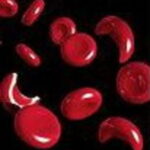Pallor simply means paleness of the skin. It is the first sign noticed when someone is a bit under the weather or coming down with the flu. Parents use paleness as a check system on their kids to determine if the child is really sick.
Pallor is accounted for because Capillaries make normal skin appear pinkish. This occurs from the blood flowing through them. Mucous membranes look to have a darker shade of pink. Maybe from the nose shading them when light comes into play.
The absence of a pinky skin color could find Anemia, low red blood cells, to be the central culprit. Iron is then needed to build the blood back up.
Other ways the appearance of paleness can be visible is by the body’s reaction to pain, cold exposure, a hearty scare, or physical exhaustion. Blood constriction running through the Capillaries of the skin can cause problems in an otherwise healthy person.
The opposite can be said of dilated Capillaries. The more blood passing through makes the skin appear red. A person with Anemia and dilated Capillaries will still have a red appearance instead of paleness giving the illusion of being healthy. Fever, blushing, embarrassment, and heart disease can produce red skin.
Cyanosis happens when the Capillaries have less then normal Hemoglobin, red blood cells, in the blood supply circulating through them. The result isn’t pale or red skin it is blue. Blue skin isn’t usually witnessed, but instead the blue is more readily seen in fingernails, ears, lips, nose, and cheeks.
Cyanosis overall is improper air exposure in the blood. It is often the symptom of disease in the lungs or heart. Bluing of a specific area on the body is character of a vein obstruction causing red blood cells to lose oxygen as they move slowly in the Capillaries.
Nail conditions can alter the appearance of nails by color, shape, thickness, nail loss, and swelling of nail beds and surrounding tissue. Any change in nails can be due to blood, heart, endocrine glands, and lung disease as indicated in Pallor, paleness of nails from Anemia, Cyanosis, bluing of nails from lung or heart disease.
Below are some Nail conditions and Probable Causes.
1. Brittle Shineless Nails
May exist at Birth or be linked to Hypothyroidism, or Fungi.
2. Thick Rough Nails
May develop from Fungi, Psoriasis, Eczema, Inflammation of close tissue, and Pituitary problems.
3. Thin Slow Growing Nails
May be due to a pre-existing Birth condition, Nerves, or poor Circulation.
4. Unusual Nail Growth In A Certain Direction
May be blamed on Shoes that don’t fit well, nail bed Inflammation or Bacteria.
5. Blood Between The Nail And It’s Bed
May have been dealt from a Bruising, trauma leftover from an accident, or Blood and Valve disease of the Heart.
6. Loose Nails That Sometime Fall Out
May be caused by the effect of Inflammation or Trauma such as shutting a door on the nail.
Treatment of nails can be both internal and external. Sick nails may have to be removed, pills to kill Fungi taken, and saline hot soaks given to ward off infections and pain.

